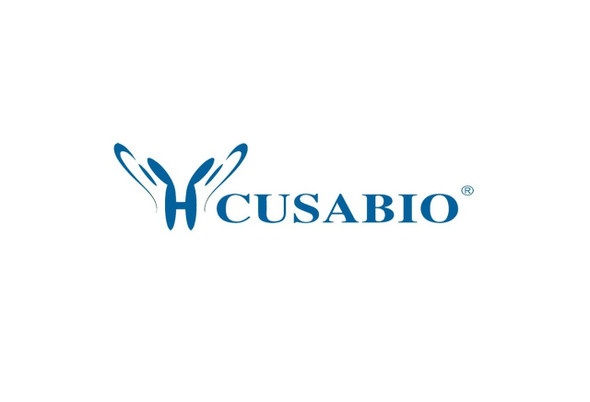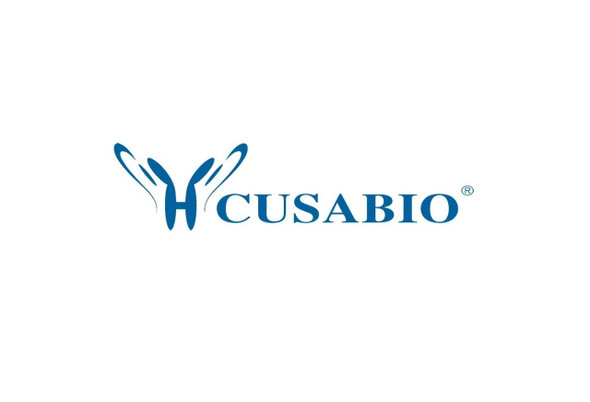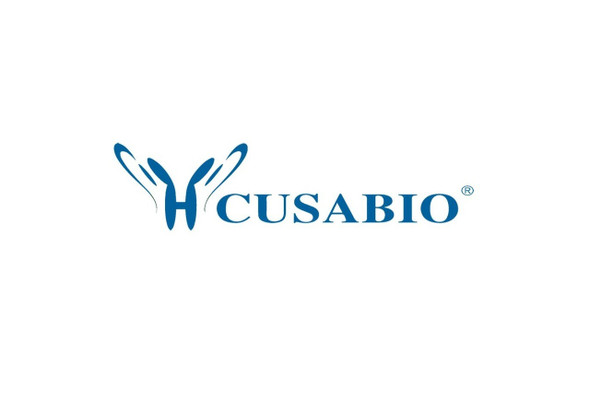Cusabio Human Recombinants
Recombinant Human Cytoplasmic domain polyadenylation element-binding protein 1 (CPEB1) | CSB-EP861184HU
- SKU:
- CSB-EP861184HU
- Availability:
- 13 - 23 Working Days
Description
Recombinant Human Cytoplasmic domain polyadenylation element-binding protein 1 (CPEB1) | CSB-EP861184HU | Cusabio
Alternative Name(s): CEBP; CPE binding protein 1; CPE BP1; CPE-binding protein 1; CPE-BP1; CPEB 1; CPEB; CPEB-1; CPEB1; CPEB1 protein; CPEB1_HUMAN; Cytoplasmic polyadenylation binding protein 1; Cytoplasmic polyadenylation element binding protein; Cytoplasmic polyadenylation element binding protein 1; Cytoplasmic polyadenylation element-binding protein 1; FLJ13203; h CEBP; h-CEBP; hCPEB 1; hCPEB-1; MGC34136; MGC60106; mKIAA0940; MKIAA0940 protein
Gene Names: CPEB1
Research Areas: Epigenetics and Nuclear Signaling
Organism: Homo sapiens (Human)
AA Sequence: MLFPTSAQESSRGLPDANDLCLGLQSLSLTGWDRPWSTQDSDSSAQSSTHSVLSMLHNPLGNVLGKPPLSFLPLDPLGSDLVDKFPAPSVRGSRLDTRPILDSRSSSPSDSDTSGFSSGSDHLSDLISSLRISPPLPFLSLSGGGPRDPLKMGVGSRMDQEQAALAAVTPSPTSASKRWPGASVWPSWDLLEAPKDPFSIEREARLHRQAAAVNEATCTWSGQLPPRNYKNPIYSCKVFLGGVPWDITEAGLVNTFRVFGSLSVEWPGKDGKHPRCPPKGYVYLVFELEKSVRSLLQACSHDPLSPDGLSEYYFKMSSRRMRCKEVQVIPWVLADSNFVRSPSQRLDPSRTVFVGALHGMLNAEALAAILNDLFGGVVYAGIDTDKHKYPIGSGRVTFNNQRSYLKAVSAAFVEIKTTKFTKKVQIDPYLEDSLCHICSSQPGPFFCRDQVCFKYFCRSCWHWRHSMEGLRHHSPLMRNQKNRDSS
Source: E.coli
Tag Info: N-terminal 6xHis-SUMO-tagged
Expression Region: 1-486aa
Sequence Info: Full Length of isoform 4
MW: 69.6 kDa
Purity: Greater than 90% as determined by SDS-PAGE.
Relevance: Sequence-specific RNA-binding protein that regulates mRNA Cytoplasmic domain polyadenylation and translation initiation during oocyte maturation, early development and at postsynapse sites of neurons. Binds to the Cytoplasmic domain polyadenylation elent (CPE), an uridine-rich sequence elent (consensus sequence 5'-UUUUUAU-3') within the mRNA 3'-UTR. In absence of phosphorylation and in association with TACC3 is also involved as a repressor of translation of CPE-containing mRNA; a repression that is relieved by phosphorylation or degradation . Involved in the transport of CPE-containing mRNA to dendrites; those mRNAs may be transported to dendrites in a translationally dormant form and translationally activated at synapses . Its interaction with APLP1 promotes local CPE-containing mRNA polyadenylation and translation activation . Induces the assbly of stress granules in the absence of stress.
Reference: Identification and characterization of the gene encoding human Cytoplasmic domain polyadenylation element binding protein.Welk J.F., Charlesworth A., Smith G.D., MacNicol A.M.Gene 263:113-120(2001)
Storage: The shelf life is related to many factors, storage state, buffer ingredients, storage temperature and the stability of the protein itself. Generally, the shelf life of liquid form is 6 months at -20?/-80?. The shelf life of lyophilized form is 12 months at -20?/-80?.
Notes: Repeated freezing and thawing is not recommended. Store working aliquots at 4? for up to one week.
Function: Sequence-specific RNA-binding protein that regulates mRNA cytoplasmic polyadenylation and translation initiation during oocyte maturation, early development and at postsynapse sites of neurons. Binds to the cytoplasmic polyadenylation element (CPE), an uridine-rich sequence element (consensus sequence 5'-UUUUUAU-3') within the mRNA 3'-UTR. RNA binding results in a clear conformational change analogous to the Venus fly trap mechanism
Involvement in disease:
Subcellular Location: Cytoplasm, Nucleus, Cytoplasm, P-body, Cytoplasmic granule, Cell junction, synapse, Membrane, Cell junction, synapse, postsynaptic cell membrane, postsynaptic density, Cell projection, dendrite
Protein Families: RRM CPEB family
Tissue Specificity: Isoform 1 is expressed in immature oocytes, ovary, brain and heart. Isoform 2 is expressed in brain and heart. Isoform 3 and isoform 4 are expressed in brain. Expressed in breast tumors and several tumor cell lines.
Paythway:
Form: Liquid or Lyophilized powder
Buffer: If the delivery form is liquid, the default storage buffer is Tris/PBS-based buffer, 5%-50% glycerol. If the delivery form is lyophilized powder, the buffer before lyophilization is Tris/PBS-based buffer, 6% Trehalose, pH 8.0.
Reconstitution: We recommend that this vial be briefly centrifuged prior to opening to bring the contents to the bottom. Please reconstitute protein in deionized sterile water to a concentration of 0.1-1.0 mg/mL.We recommend to add 5-50% of glycerol (final concentration) and aliquot for long-term storage at -20?/-80?. Our default final concentration of glycerol is 50%. Customers could use it as reference.
Uniprot ID: Q9BZB8
HGNC Database Link: HGNC
UniGene Database Link: UniGene
KEGG Database Link: KEGG
STRING Database Link: STRING
OMIM Database Link: OMIM










